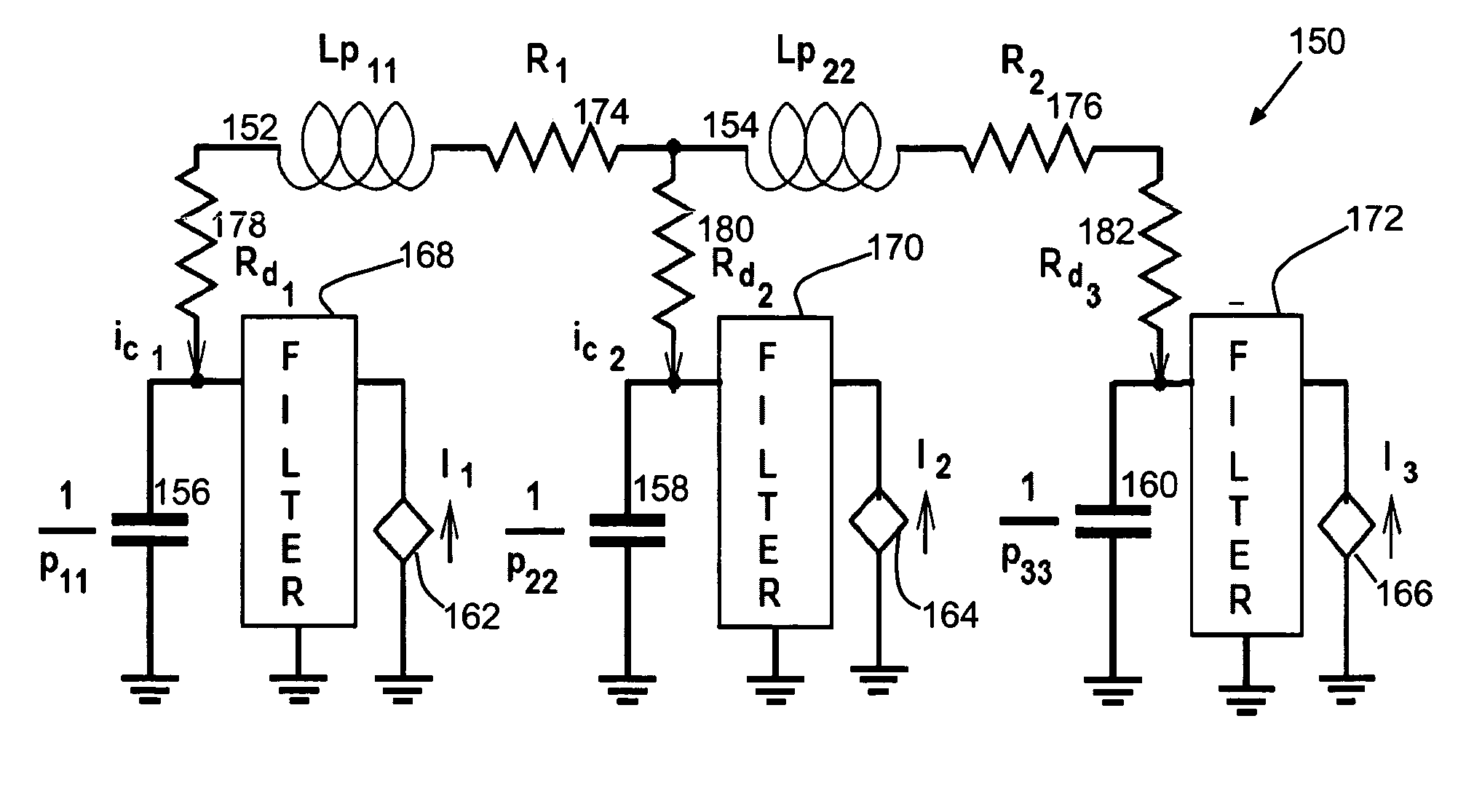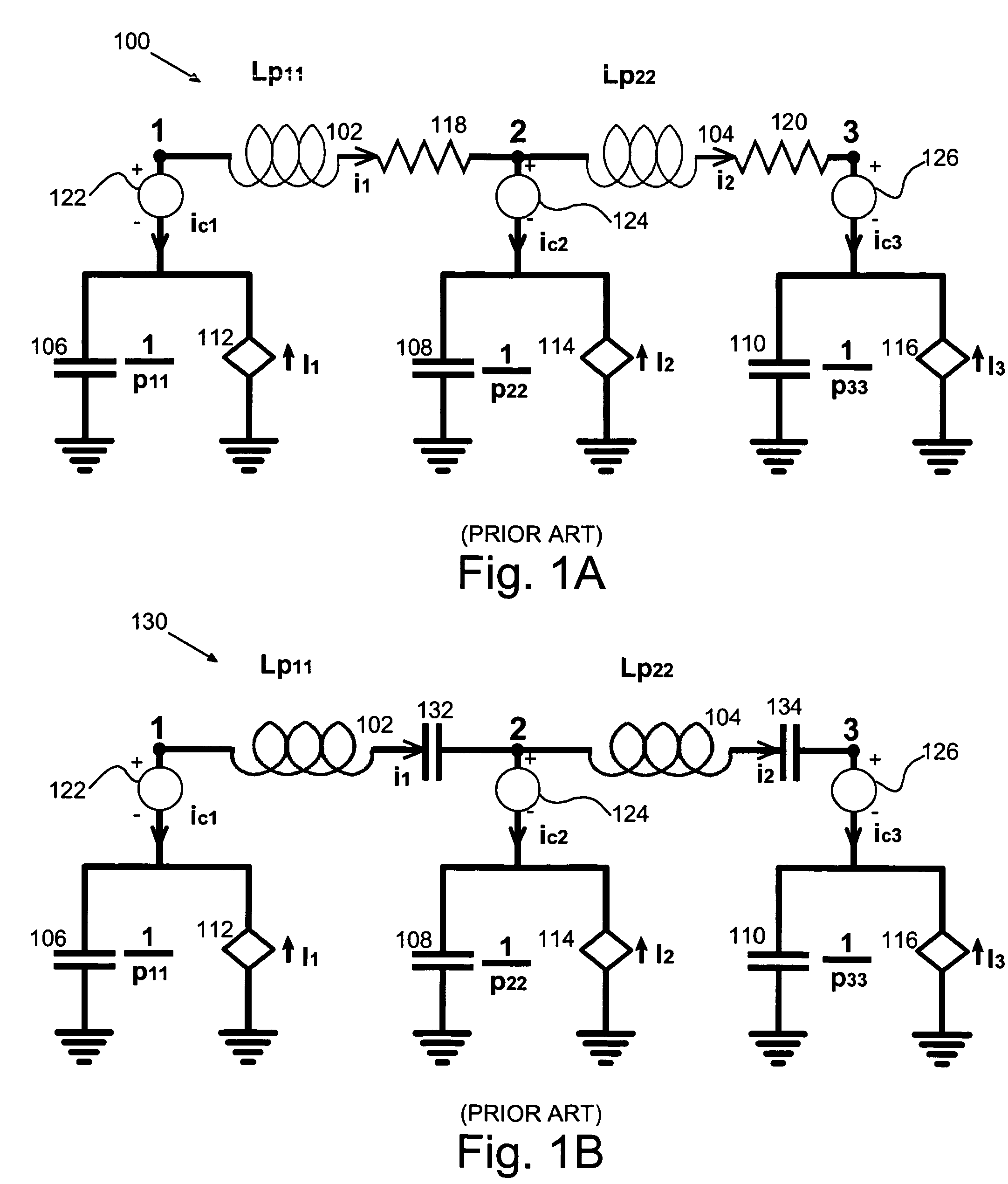Electromagnetic response model with improved high frequency stability
a high-frequency stability, electromagnetic response technology, applied in pulse manipulation, pulse technique, instruments, etc., can solve the problems of inability to model much less easily, inability to eliminate time domain instability, and only marginal increase in the stability of peec model approaches, so as to minimize high-frequency instabilities in electromagnetic models, minimize high-frequency instabilities, and extend the frequency range of electromagnetic models
- Summary
- Abstract
- Description
- Claims
- Application Information
AI Technical Summary
Benefits of technology
Problems solved by technology
Method used
Image
Examples
Embodiment Construction
[0016]Turning now to the drawings, and more particularly FIGS. 1A-B show simple prior art electromagnetic response models for modeling electromagnetic effects in a particular medium, i.e., in a conductor or in a dielectric. It should be noted that all circuit models described herein may be transformed to loop equations with and appropriate Norton to Thevenin transformation. The example of FIG. 1A shows a prior network model 100 for modeling electromagnetic effects in an interconnect such as in electronic package wiring, or, an Integrated Circuit (IC) package interconnect. In particular, the network 100 has the general form of the basic Partial Element Equivalent Circuit (PEEC) model for modified nodal analysis (MNA) of a length of a single isolated conductor with distributed (along the length) inductance modeled as partial inductances in series connected inductors 102, 104. Conductor capacitance is modeled as distributed lump capacitances in branch capacitors 106, 108, 110. The bran...
PUM
 Login to View More
Login to View More Abstract
Description
Claims
Application Information
 Login to View More
Login to View More - R&D
- Intellectual Property
- Life Sciences
- Materials
- Tech Scout
- Unparalleled Data Quality
- Higher Quality Content
- 60% Fewer Hallucinations
Browse by: Latest US Patents, China's latest patents, Technical Efficacy Thesaurus, Application Domain, Technology Topic, Popular Technical Reports.
© 2025 PatSnap. All rights reserved.Legal|Privacy policy|Modern Slavery Act Transparency Statement|Sitemap|About US| Contact US: help@patsnap.com



